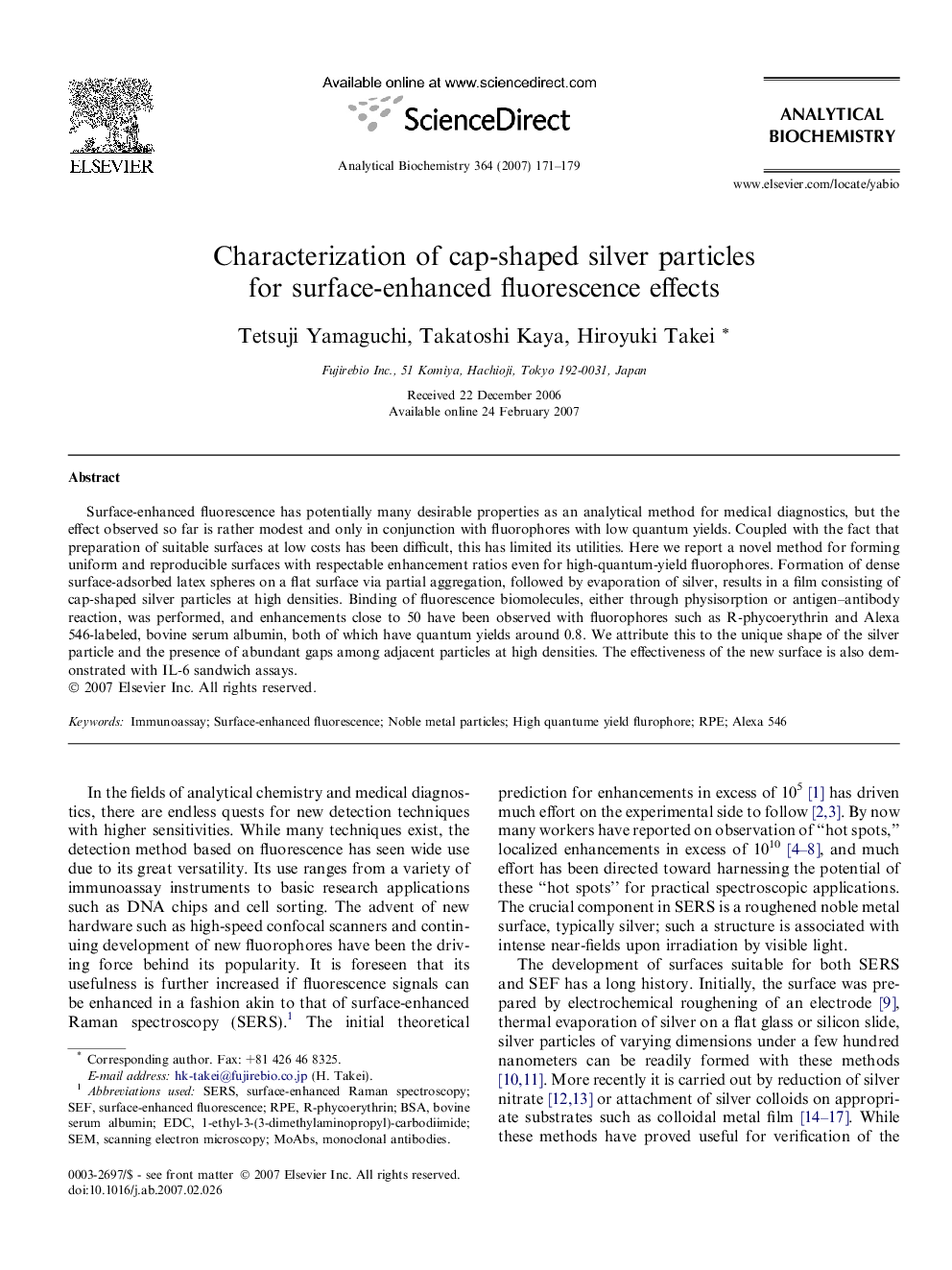| Article ID | Journal | Published Year | Pages | File Type |
|---|---|---|---|---|
| 1176114 | Analytical Biochemistry | 2007 | 9 Pages |
Surface-enhanced fluorescence has potentially many desirable properties as an analytical method for medical diagnostics, but the effect observed so far is rather modest and only in conjunction with fluorophores with low quantum yields. Coupled with the fact that preparation of suitable surfaces at low costs has been difficult, this has limited its utilities. Here we report a novel method for forming uniform and reproducible surfaces with respectable enhancement ratios even for high-quantum-yield fluorophores. Formation of dense surface-adsorbed latex spheres on a flat surface via partial aggregation, followed by evaporation of silver, results in a film consisting of cap-shaped silver particles at high densities. Binding of fluorescence biomolecules, either through physisorption or antigen–antibody reaction, was performed, and enhancements close to 50 have been observed with fluorophores such as R-phycoerythrin and Alexa 546-labeled, bovine serum albumin, both of which have quantum yields around 0.8. We attribute this to the unique shape of the silver particle and the presence of abundant gaps among adjacent particles at high densities. The effectiveness of the new surface is also demonstrated with IL-6 sandwich assays.
